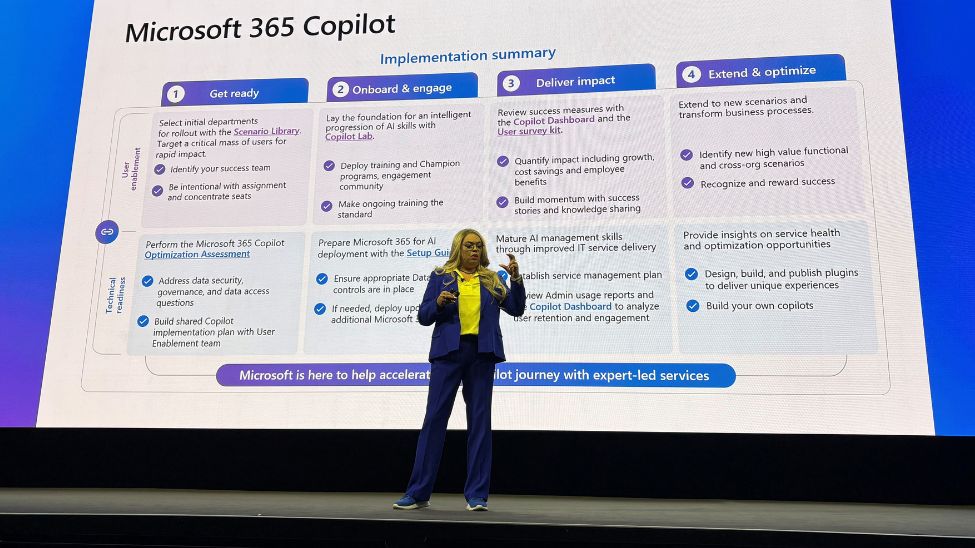Essentials of Copilot Implementation at the Microsoft AI Tour London

Integrating Microsoft Copilot into Workflows
Overview of the Session
At the Microsoft AI Tour held in London, Karuana Gatimu, the Director of Customer Advocacy for AI and Collaboration at Microsoft, shared valuable insights on effectively implementing Microsoft Copilot in organizations. Her session, titled "Copilot Implementation Essentials," focused on how AI tools can change business operations by minimizing repetitive tasks and enhancing productivity.
The Shift Towards an “Agentic World”
Gatimu emphasized the transition toward what she calls an “agentic world,” where AI tools are integrated into daily workflows. These technologies are designed to assist employees by automating routine tasks. However, she made it clear that while AI plays a significant role, human oversight is crucial. It is essential for organizations to ensure that employees are equipped and trained to understand and guide the use of AI technologies.
Upskilling Employees in AI
One of the main points Gatimu raised is the necessity for organizations to invest in upskilling their workforce in AI technologies. She pointed out that many best practices for AI implementation are not new but have gained heightened importance. Organizations need to focus on how their leaders learn about these new capabilities and engage in dialogue with their teams.
Microsoft’s Four Pillars for Success
Gatimu outlined a framework consisting of four critical pillars to guarantee successful AI integration:
- Get Ready: Prepare the organization and ensure that the technical framework is solid.
- Onboard and Engage: Familiarize users with the technology and promote its adoption.
- Deliver Impact: Measure success metrics and focus on driving business value.
- Extend and Optimize: Refine processes and expand AI usage gradually over time.
Importance of Technical Readiness
According to Gatimu, successful AI rollouts require user enablement to be in sync with technical readiness. Creating a structured timeline with specific milestones is crucial for effective implementation. She provided a 12-week framework for organizations to roll out Microsoft Copilot systematically.
Strategic Implementation Steps
Gatimu recommended that organizations identify cohorts of employees with similar tasks and focus on transforming one business process at a time. This allows groups to concentrate their efforts effectively.
- Identify Enthusiasm: Finding employees who are passionate about AI can help drive adoption and support.
- Communication Is Key: Gatimu stressed that successful AI implementation hinges on effective communication within the team.
Simplifying AI Adoption
Gatimu reassured her audience that the journey towards AI adoption need not be daunting. The first step is simply to understand how the system operates, which lays the groundwork for more complex applications later.
Insights from Dan Stevenson
Following Gatimu, Dan Stevenson, the Partner Director of Product Management for the Copilot Ecosystem at Microsoft, presented additional insights. He discussed how AI agents extend the core capabilities of AI to an organization’s specific data, applications, and services.
Recipe for Success in Copilot Implementation
Stevenson’s recommendations include:
- Start Small: Begin the adoption process with scenarios that promise the most value.
- Refine Through Feedback: Adjust technologies based on employee experiences and feedback.
- Gradual Scaling: Expand the use of AI as insights are gained and adoption increases.
Real-World Applications of Copilot
Stevenson highlighted notable examples where organizations have successfully utilized Copilot:
- Institut Curie: Collaborated with Microsoft partner Witivio to leverage AI in healthcare research.
- Unilever: Utilized Copilot to streamline the creation of marketing content for its brand Knorr.
Through structured implementation, organizations can effectively enhance productivity and empower their workforce to operate more efficiently by integrating AI technologies like Microsoft Copilot.






